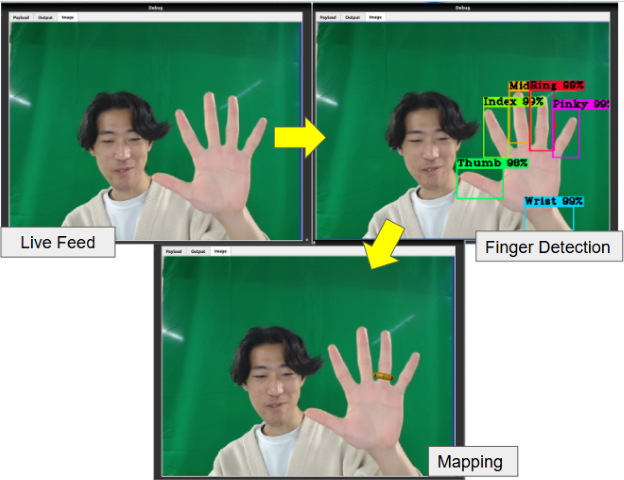



In the IDW ’25, we are introducing a “I4D Contest” targeting students from colleges of technology (KOSEN). Outstanding demonstrations will be awarded the I4D Best Demonstration Award.
Colleges of Technology (KOSEN)
Colleges of Technology are higher education institutions for junior high school graduates. There are 58 colleges of technology in Japan, and their excellent education system, known as the “KOSEN education system”, has been highly praised domestically and internationally. KOSEN institutions have also been established overseas, including in Mongolia. KOSEN students actively present their research achievements in academic conferences, and their accomplishments in robot contests and programming contests have attracted media attention.| Date: | December 4, 2025 |
| Place: | Lobby, International Conference Center Hiroshima |
| Hours: | Demonstration: 12:30-16:00 Award Ceremony: 17:30-18:00 |
(1) Evaluation Method
The judging will be conducted by an I4D Award Committee. The judges will visit the booths during the contest and evaluate them. The explanation to general attendees will also be considered in the evaluation. Voting by general participants will also be conducted, and the results will be considered in the evaluation.
(2) Evaluation Criteria
(3) Award
| I4D-1 | Interactive Projection Mapping Through Real-Time Body Gesture Tracking Optical Design Engineering Lab. National Institute of Technology, Nagaoka College |
 (Introduction Video)
(Introduction Video)
|
| Spatial Augmented Reality (SAR) aims to seamlessly integrate physical and cyber spaces using projection technology, eliminating the need for head-mounted displays. While proposed in 1998, SAR realization became feasible following the open-sourcing of Google MediaPipe in 2019. This research develops a new technique for constructing highly responsive interactive projection mapping by integrating TouchDesigner, and Google MediaPipe. The system utilizes MediaPipe to stream hand coordinate data to TouchDesigner, where it is converted into control signals. Successful interaction was demonstrated: the normalized length between the left hand's thumb and index finger controls dynamic pattern scaling, alongside image modification via right-hand gestures. | ||
| I4D-2 | Development of an Image Recognition and Mapping System for Virtual Accessories Han Lab International College of Technology, Kanazawa |
 (Introduction Video)
(Introduction Video)
|
| We are going to demonstrate a system using AI that detects fingers in a live feed and overlays a ring onto a finger. This system uses image recognition algorithms on video taken by a webcam and detects any visible fingers. Afterwards, a 3D model of a ring is mapped to the appropriate position on a specific finger. As the hand and fingers move, the system will track the movement of the finger and continue to map the ring to the finger alongside its movements. By using this system, users can confirm their compatibility with the ring. | ||